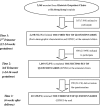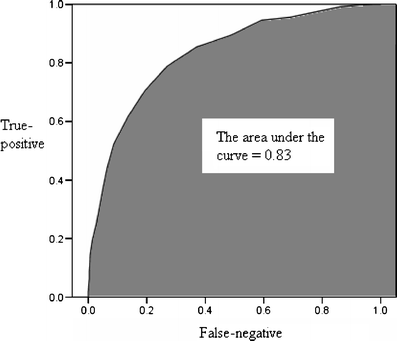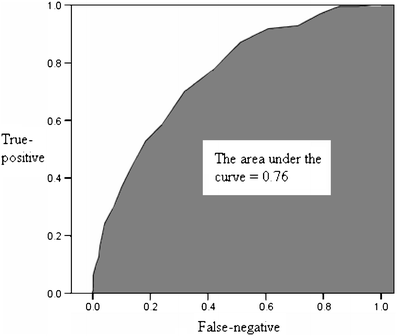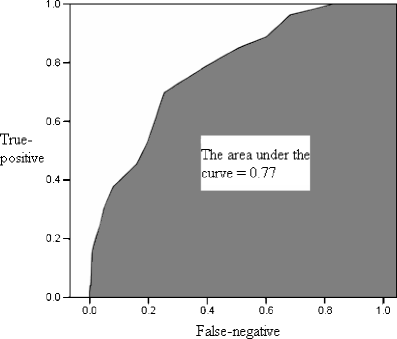The utility of screening for perinatal depression in the second trimester among Chinese: a three-wave prospective longitudinal study
- PMID: 20058040
- PMCID: PMC2953626
- DOI: 10.1007/s00737-009-0134-x
The utility of screening for perinatal depression in the second trimester among Chinese: a three-wave prospective longitudinal study
Abstract
This paper aims to study the pattern of perinatal depressive symptomatology and determine the predictive power of second trimester perinatal depressive symptoms for future perinatal periods. A population-based sample of 2,178 women completed the Edinburgh Postnatal Depression Scale (EPDS) in the second and third trimesters and at 6 weeks postpartum. Repeated measures ANOVAs were used to determine the EPDS scores across three stages. The predictive power of the second trimester EPDS score in identifying women with an elevated EPDS score in the third trimester and at 6 weeks postpartum were determined. The predictive power of the second trimester EPDS score was further assessed using stepwise logistic regression and receiver operator characteristic curves. EPDS scores differed significantly across three stages. The rates were 9.9%, 7.8%, and 8.7% for an EPDS score of >14 in the second and third trimesters and at 6 weeks postpartum, respectively. Using a cut-off of 14/15, the second trimester EPDS score accurately classified 89.6% of women in the third trimester and 87.2% of those at 6 weeks postpartum with or without perinatal depressive symptomatology. Women with a second trimester EPDS score >14 were 11.78 times more likely in the third trimester and 7.15 times more likely at 6 weeks postpartum to exhibit perinatal depressive symptomatology after adjustment of sociodemographic variables. The area under the curve for perinatal depressive symptomatology was 0.85 in the third trimester and 0.77 at 6 weeks postpartum. To identify women at high risk for postpartum depression, healthcare professionals could consider screening all pregnant women in the second trimester so that secondary preventive intervention may be implemented.
Figures





Similar articles
-
[A study of the Edinburgh Postnatal Depression Scale (EPDS) on 859 mothers: detection of mothers at risk for postpartum depression].Encephale. 2004 Jul-Aug;30(4):376-81. doi: 10.1016/s0013-7006(04)95451-6. Encephale. 2004. PMID: 15538313 French.
-
Antenatal screening timeline and cutoff scores of the Edinburgh Postnatal Depression Scale for predicting postpartum depressive symptoms in healthy women: a prospective cohort study.BMC Pregnancy Childbirth. 2022 Jun 28;22(1):527. doi: 10.1186/s12884-022-04740-w. BMC Pregnancy Childbirth. 2022. PMID: 35764977 Free PMC article.
-
Can we identify mothers at risk for postpartum depression in the immediate postpartum period using the Edinburgh Postnatal Depression Scale?J Affect Disord. 2004 Feb;78(2):163-9. doi: 10.1016/s0165-0327(02)00299-9. J Affect Disord. 2004. PMID: 14706728
-
Anxious and depressive components of Edinburgh Postnatal Depression Scale in maternal postpartum psychological problems.J Perinat Med. 2013 Jul;41(4):343-8. doi: 10.1515/jpm-2012-0258. J Perinat Med. 2013. PMID: 23426862 Review.
-
The EPDS and Australian Indigenous women: A systematic review of the literature.Women Birth. 2021 Mar;34(2):e128-e134. doi: 10.1016/j.wombi.2020.02.007. Epub 2020 Mar 3. Women Birth. 2021. PMID: 32144025
Cited by
-
Trend of Antenatal Depression and Its Risk Factors Among Pregnant Women in China From 2016 to 2021: A Repeated Cross-Sectional Study Under Multiple Fertility Policy Adjustments and Economic Development.Depress Anxiety. 2025 Apr 15;2025:6823160. doi: 10.1155/da/6823160. eCollection 2025. Depress Anxiety. 2025. PMID: 40264858 Free PMC article.
-
The prevalence and clinical presentation of antenatal depression in rural South Africa.J Affect Disord. 2011 Dec;135(1-3):362-73. doi: 10.1016/j.jad.2011.08.011. Epub 2011 Aug 31. J Affect Disord. 2011. PMID: 21880372 Free PMC article.
-
Negative Life Events and Antenatal Depression among Pregnant Women in Rural China: The Role of Negative Automatic Thoughts.PLoS One. 2016 Dec 15;11(12):e0167597. doi: 10.1371/journal.pone.0167597. eCollection 2016. PLoS One. 2016. PMID: 27977715 Free PMC article.
-
Antenatal depression in Anuradhapura, Sri Lanka and the factor structure of the Sinhalese version of Edinburgh post partum depression scale among pregnant women.PLoS One. 2013 Jul 26;8(7):e69708. doi: 10.1371/journal.pone.0069708. Print 2013. PLoS One. 2013. PMID: 23922781 Free PMC article.
-
Sociodemographic, obstetric characteristics, antenatal morbidities, and perinatal depressive symptoms: A three-wave prospective study.PLoS One. 2018 Feb 8;13(2):e0188365. doi: 10.1371/journal.pone.0188365. eCollection 2018. PLoS One. 2018. PMID: 29420535 Free PMC article.
References
-
- Alexander R, Feeney J, Hohaus L, Noller P. Attachment style and coping resources as predictors of coping strategies in the transition to parenthood. Personal Relationships. 2001;8:137–152. doi: 10.1111/j.1475-6811.2001.tb00032.x. - DOI
-
- Andersson L, Sundstrom-Poromaa I, Wulff M, Astrom M, Bixo M. Implications of antenatal depression and anxiety for obstetric outcome. Obstet Gynecol. 2004;104:467–476. - PubMed

